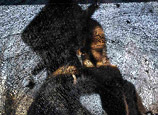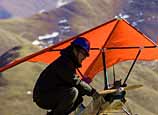
CAUSES AND EFFECTS OF DESERTIFICATION
The Lake Aibi Wetland National Nature Reserve covers an area of 2670 square km.
Some 385 species of wildlife used to live in and around the body of water, but 2012 statistics show only 322 species of plants and 111 species of birds can still be found there.
Today, the lake is reduced to less than 500 square km in size, with more than 1,500 square km having been dried up in recent years, according to officials.
The increasingly serious desertification and the sandstorm it causes have disrupted local people's lives and the normal production of agriculture and industry.
Based on experts' calculation, 5 million tonnes of sand and salt dust is blown away each year and spread thousands of km to reach the regional capital of Urumqi and even the city of Beijing.
"I once drove from Jinghe county to Urumqi on a business trip, and the sandstorm chased us all the way. It was more horrible than what we see in the movies," said Haiming, a member of staff at a local publicity office.
Jinghe County is 35 km south of Lake Aibi. As the ecosystem worsens, the county now suffers 180 days of sandstorm each year, 13 times the number it did in the 1960s.
Salt dust drops on transmission lines and causes power failure in neighboring counties about 200 times on average every year. Jinghe alone suffers more than 50 million yuan (about 8 million U.S. dollars) in direct financial losses, and hundreds of millions in indirect losses.
The course of the 312 national highway that runs past Lake Aibi has been changed three times as sandstorm erode and bury the road.
The grassland produces only half of the grass it did a decade ago. Thirteen percent of cattle die from diseases each year while in 1980s the figure was only 4.6 percent.
















 Landmark building should respect the public's feeling
Landmark building should respect the public's feeling


![]()
